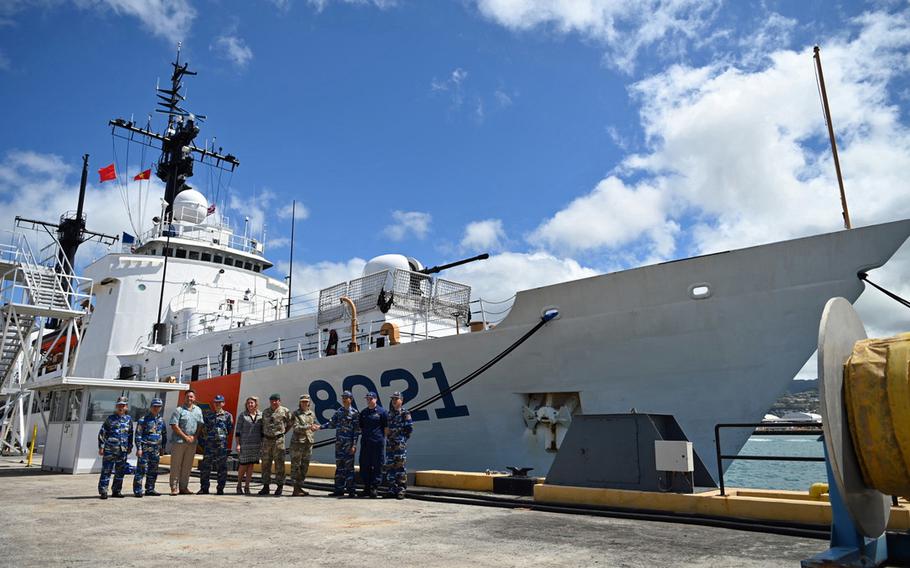
U.S. Indo-Pacific Command officials welcomed the Vietnam coast guard cutter CSB 8021 to Hawaii on June 9, 2021. The U.S. government gave the former Hamilton-class U.S. Coast Guard vessel to Vietnam on Aug. 14, 2020. (Melvin J Gonzalvo/U.S. Navy)
TOKYO — The U.S. and Vietnamese coast guards will expand a working relationship on the high seas in the wake of U.S. President Joe Biden’s visit to Hanoi this month, according to a top American diplomat.
Mira Rapp-Hooper, National Security Council director for the Indo-Pacific, made the pledge during an online press conference Sept. 13 alongside U.S. Ambassador to Vietnam Marc Knapper.
“The United States and Vietnam have a longstanding security partnership that ranges [across] a number of areas,” Rapp-Hooper told reporters following Biden’s Sept. 10-11 visit.
“We have done a lot of important work together to build capacity in areas like coast guard capacity and in the maritime domain, and we are looking forward to continuing to grow our relationship in those areas,” she said.
The U.S. has transferred three of its older Coast Guard cutters to Vietnam since 2017, part of the tens of millions of dollars in security assistance and foreign military sales to the former adversary in recent years, according to a fact sheet on the U.S. Embassy to Vietnam website.
The nations’ coast guards cooperate on maritime security in the region, said Kirah Wurst, spokeswoman for the U.S. Indo-Pacific Command, by email Tuesday.
“We have provisioned patrol craft, maintenance facilities, and training to the Vietnam Coast Guard,” Wurst said. “Our work with the Vietnam Coast Guard focuses on countering illicit smuggling and countering illegal, unregulated, and unreported (IUU) fishing.”
The Biden administration has built an overlapping range of coalitions and partnerships throughout the Indo-Pacific, Rapp-Hooper said during the press conference.
“We see the U.S.-Vietnam partnership now taking its place, its rightful place, in the pantheon of these incredible partnerships,” she said.
The U.S. and Vietnam are increasingly aligned in their objectives in the region, including the rule of law in international waterways like the South China Sea, secure and resilient supply chains for emerging technologies and a rules-based, open, vibrant economic order, she said.
The U.S. is investing in Vietnam’s technology sector, to include a historic semiconductor partnership and training for local tech workers, Rapp-Hooper said.
“And this in many ways, of course, is an economic project, but on the United States it’s also a security project,” she said. “It’s good for the resilience of our supply chains, particularly in critical technology areas.”
Although Vietnam, like the Philippines and Japan, has faced an often aggressive Chinese coast guard in maritime territorial disputes, warmer ties with the U.S. and Vietnam are not meant to challenge China, the diplomats said.
“This relationship isn’t about anyone else,” Knapper said. “It’s about our two countries and the intrinsic value this relationship has in terms of our shared prosperity, our shared security, our shared interests in a free and open Indo-Pacific and a free and open South China Sea.”